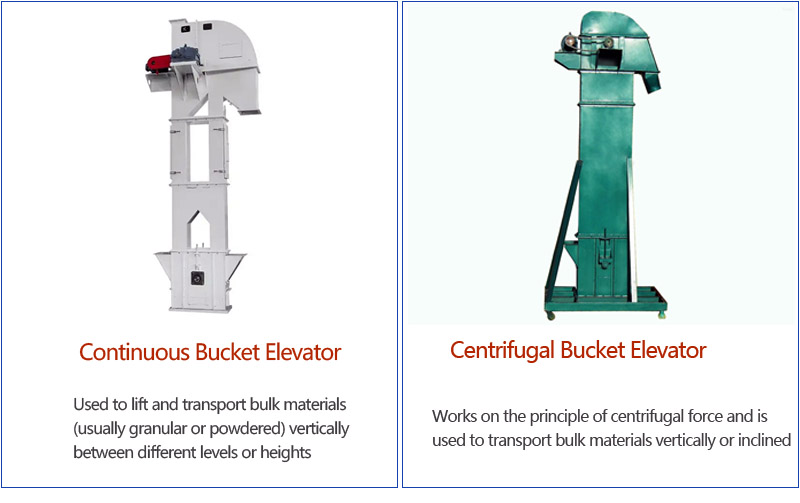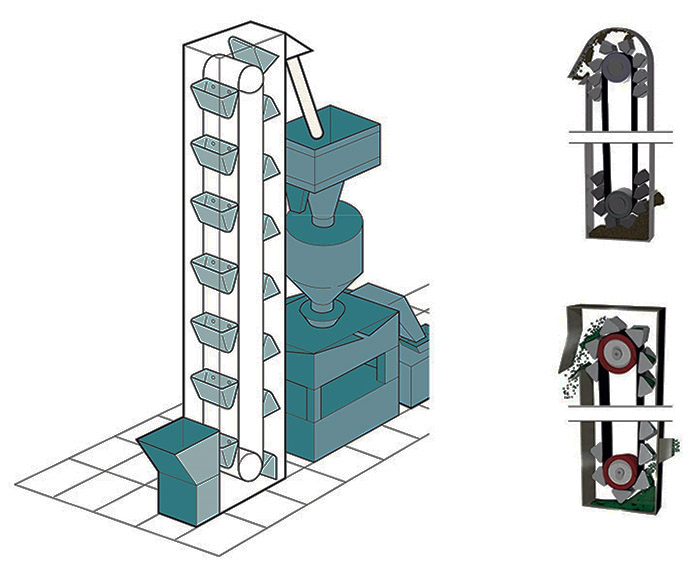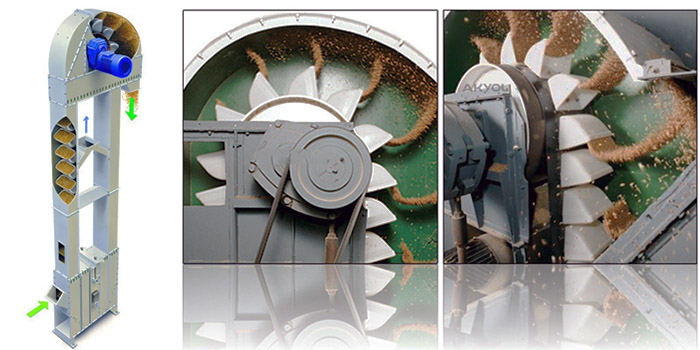What is the difference between centrifugal and continuous bucket elevators?
Saturday March-15 2025 15:59:22
Bucket elevators are essential equipment for vertical material handling in industries such as agriculture, mining, and manufacturing. Two primary designs are commonly used: centrifugal bucket elevators and continuous bucket elevators. Below is a detailed comparison of these two types based on their appearance, structure, working principles, and applications.
1. Appearance

Centrifugal Bucket Elevators:These elevators typically feature a compact design with buckets mounted at regular intervals on a belt or chain. The buckets are spaced apart to allow for high-speed operation and efficient material discharge.
Continuous Bucket Elevators:These elevators have buckets that are closely spaced or even overlapping, creating a continuous flow of material. The design is more elongated, with a smoother and slower operational appearance.
2. Structure
Centrifugal Bucket Elevators:
Buckets: Designed with a deep, scoop-like shape to handle abrasive and free-flowing materials like sand, gravel, or cement.
Drive System: Uses either belts or chains, with belts being more common for lighter materials and chains for heavier loads.
Discharge Mechanism: Relies on centrifugal force to throw material out of the buckets at the discharge point.
Continuous Bucket Elevators:
Buckets: Designed with a shallower, more open shape to allow gentle material handling. The buckets often have a curved back to facilitate smooth discharge.
Drive System: Typically uses belts or chains, but the design focuses on slower speeds to minimize material damage.
Discharge Mechanism: Uses gravity and the inverted position of the buckets to allow material to slide out gently.
3. Working Principles
Centrifugal Bucket Elevators:Operate at high speeds, generating centrifugal force at the head pulley. This force throws material out of the buckets and into the discharge chute.

Suitable for durable, abrasive, and free-flowing materials but not recommended for fragile or lightweight materials due to the risk of damage.
Continuous Bucket Elevators:Operate at slower speeds, eliminating the throwing action. Material flows directly into the buckets and is discharged gently as the buckets invert.

Ideal for fragile, lightweight, or friable materials, as it minimizes degradation and aeration.
4. Applications
Centrifugal Bucket Elevators:Commonly used in industries handling heavy, abrasive, or free-flowing materials, such as mining (sand, gravel), cement production, and agriculture (grain, feed).
Not suitable for fragile or lightweight materials like flour or powdered chemicals.
Continuous Bucket Elevators:Widely used in industries requiring gentle material handling, such as food processing (flour, sugar), pharmaceuticals, and chemical manufacturing.
Effective for materials that are prone to degradation or require minimal aeration.
Summary Table
| Feature | Centrifugal Bucket Elevators | Continuous Bucket Elevators |
| Appearance | Compact, spaced buckets | Elongated, closely spaced or overlapping buckets |
| Structure | Deep buckets, belt/chain drive | Shallow buckets, belt/chain drive |
| Working Principle | High-speed, centrifugal discharge | Low-speed, gravity-based discharge |
| Applications | Abrasive, heavy, free-flowing materials | Fragile, lightweight, friable materials |
The choice between centrifugal and continuous bucket elevators depends on the material characteristics and operational requirements. Centrifugal elevators are ideal for high-speed handling of durable materials, while continuous elevators excel in gentle handling of fragile or lightweight substances. For custom solutions, consulting with manufacturers like FEECO or local providers can ensure optimal performance
Recommend Product
- Bucket Elevator
- Bucket Elevators Manufacturers
- Continuous Bucket Elevator
- Centrifugal Bucket Elevator
